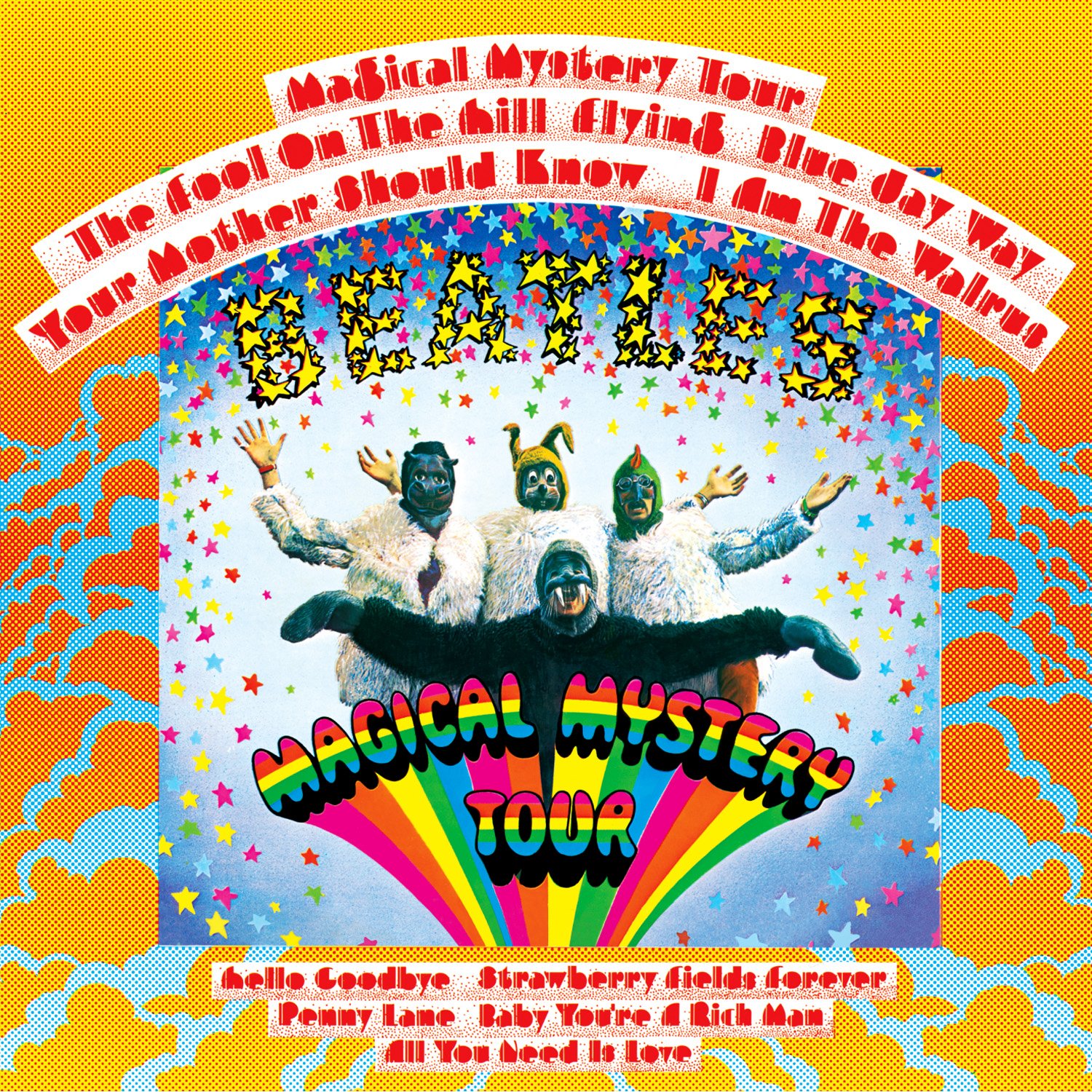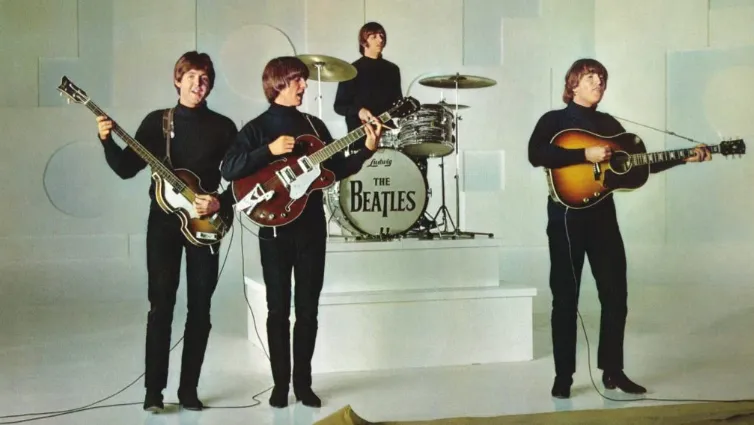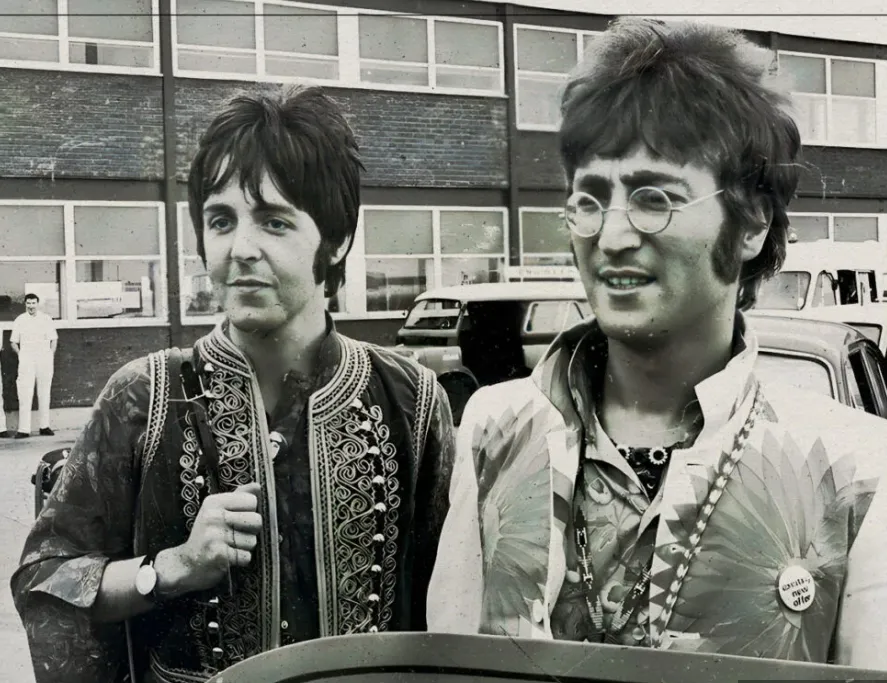The Beatles' discography is a treasure trove of genre-defying, innovative music that has inspired generations.
Among their storied catalog lies a lesser-known gem, “Flying”—a unique instrumental piece that stands apart from their more famous vocal-driven songs.
To the casual listener, "Flying" might seem just a whimsical detour.
However, as the Jervis Family, devoted aficionados of The Beatles, we have come to realize that this track offers fascinating insights into the band's creative journey during a pivotal time in their career.
The Context of "Flying": Magical Mystery Tour and Psychedelia

To understand why The Beatles created "Flying," we must first delve into the context in which it was produced—a transformative period marked by the Magical Mystery Tour project and the band's continued exploration of new musical landscapes.
In 1967, following the monumental success of "Sgt. Pepper's Lonely Hearts Club Band," The Beatles were looking for new artistic avenues.
The Beatles young and full of boundless creativity, were not just changing music; they were changing culture.
The Magical Mystery Tour film was an experimental and ambitious project intended to capture the essence of the band’s whimsical, exploratory spirit.
As with many of their works during this time, the film and its accompanying soundtrack sought to push the boundaries of conventional music and artistic expression.
"Flying" found its place on this eclectic album, serving as an aural representation of the band's dive into psychedelia and non-traditional formats.
The Formation: A Rare Collaborative Effort

"Flying" is notable for being one of the very few tracks credited to all four Beatles—John Lennon, Paul McCartney, George Harrison, and Ringo Starr.
This collaborative effort stands out because, by the time of its creation, most Beatles songs were increasingly being spearheaded by either Lennon or McCartney.
For the Jervis Family, this fact alone makes "Flying" intriguingly special, symbolizing a rare moment of unified creativity.
Recorded on September 8, 1967, at Abbey Road Studios, "Flying" started as an instrumental jam session. Initially titled "Aerial Tour Instrumental," it was born out of a collaborative synergy.
Each member contributed to its creation, with Lennon, McCartney, and Harrison playing their guitars through a Leslie speaker to achieve the swirling, ethereal sound that defines the track.
Ringo Starr, on the other hand, laid down the drum tracks that carry the song’s rhythmic flow.
During family discussions, we’ve often marveled at how this collaboration reflects the 'all-hands-on-deck' approach the Beatles sometimes adopted, especially in their experimental phase.
The creation of "Flying" was a fun, spontaneous endeavor—an opportunity for each member to flex their musical muscles without the pressure of producing a hit single.
Breaking New Ground: Psychedelic Elements and Studio Experimentation

The recording of "Flying" is rich with the psychedelic hallmarks that characterized much of The Beatles' work in the late 1960s.
From its swirling Mellotron flutes to the dreamy atmosphere, the song functions as a soundscape rather than a traditional pop song.
The track’s use of backward tape loops, reverb, and varying tempos showcases the band’s willingness to embrace studio experimentation and push their artistic boundaries.
For our family, the Mellotron stands as one of the most intriguing elements of "Flying."
An early keyboard instrument, it allowed the band to incorporate pre-recorded tape loops of various sounds, contributing to the song's otherworldly feel.
John Lennon’s playful manipulation of the Mellotron flutes is particularly striking, adding layers of texture that enhance the overall dreamlike quality of the track.
The Visual Component: Magical Mystery Tour's Unique Imagery
When discussing "Flying," it's impossible to ignore its visual counterpart in the Magical Mystery Tour film. The song is set to a sequence of aerial shots depicting various landscapes, enhancing the ethereal vibe.
This visual element amplifies the experience of "Flying," illustrating how the track was intended to be more than just an auditory experience but a multi-sensory journey.
The connection between music and visuals in the Magical Mystery Tour film offers fascinating insights into The Beatles' broader artistic vision during this time.
As a family, we enjoy watching these sequences, noting how seamlessly the music complements the intriguing, sometimes surreal imagery. This combination serves to immerse the listener/viewer fully into the band's psychedelic exploration.
Reception and Legacy: A Hidden Gem Rediscovered
Upon its release, both the Magical Mystery Tour film and its soundtrack received mixed reviews. Critics were initially baffled by the film's lack of a coherent plot and its avant-garde style.
However, over time, both the movie and the soundtrack have gained appreciation for their innovative spirit and creative ambition.
"Flying," too, has seen a gradual rise in its stature among Beatles enthusiasts. While it may not be as celebrated as hits like "Hey Jude" or "Let It Be,” it has carved its niche as a cult favorite.
For the Jervis Family and other dedicated Beatles fans, "Flying" serves as a captivating snapshot of the band's dynamic range and willingness to venture into uncharted sonic territories.
One aspect we often discuss is how “Flying” epitomizes The Beatles’ ethos of constant evolution.
Even in an instrumental piece with no lyrics, the band’s adventurous spirit and boundless creativity shine through.
This track proves that The Beatles’ genius wasn’t confined to their more conventional hits but extended into all their creative endeavors.
Revisiting "Flying": Modern-Day Interpretations
Today, "Flying" offers a fascinating case study for musicologists and Beatles fans alike.
Modern interpretations often view the track as an early forerunner to ambient and instrumental music genres that would later become popular.
Its experimental elements and textural richness predate the ambient works of artists like Brian Eno and Aphex Twin.
As a family, we’ve found joy in exploring various interpretations and covers of "Flying."
Diverse artists have reimagined its ethereal qualities, adding their unique touches while honoring the original’s spirit.
Listening to these modern renditions provides a sense of continuity, linking The Beatles’ innovative past to contemporary musical landscapes.
Celebrating The Beatles' Spirit of Innovation
In the end, "Flying" is much more than a whimsical instrumental track; it is an essential piece of The Beatles’ legacy.
It encapsulates a moment of unparalleled creativity and exploration for the band, serving as a testament to their willingness to push boundaries and redefine what music could be.
For the Jervis Family, “Flying” is a cherished part of The Beatles’ storied catalog, a track that prompts reflection and admiration for their unyielding ambition.
It’s a reminder that sometimes, the most compelling art can emerge from spontaneity and collective effort.
So, while "Flying" may forever remain a hidden gem, it continues to soar in the hearts of those who appreciate the boundless creativity of The Beatles.



